The Big Bang Fair 2023: the bigger bang strikes back
13 July 2023
EPCC's Ben Morse reviews EPCC attendance at this year's The Big Bang Fair, one of the UK's largest science and technology outreach events.
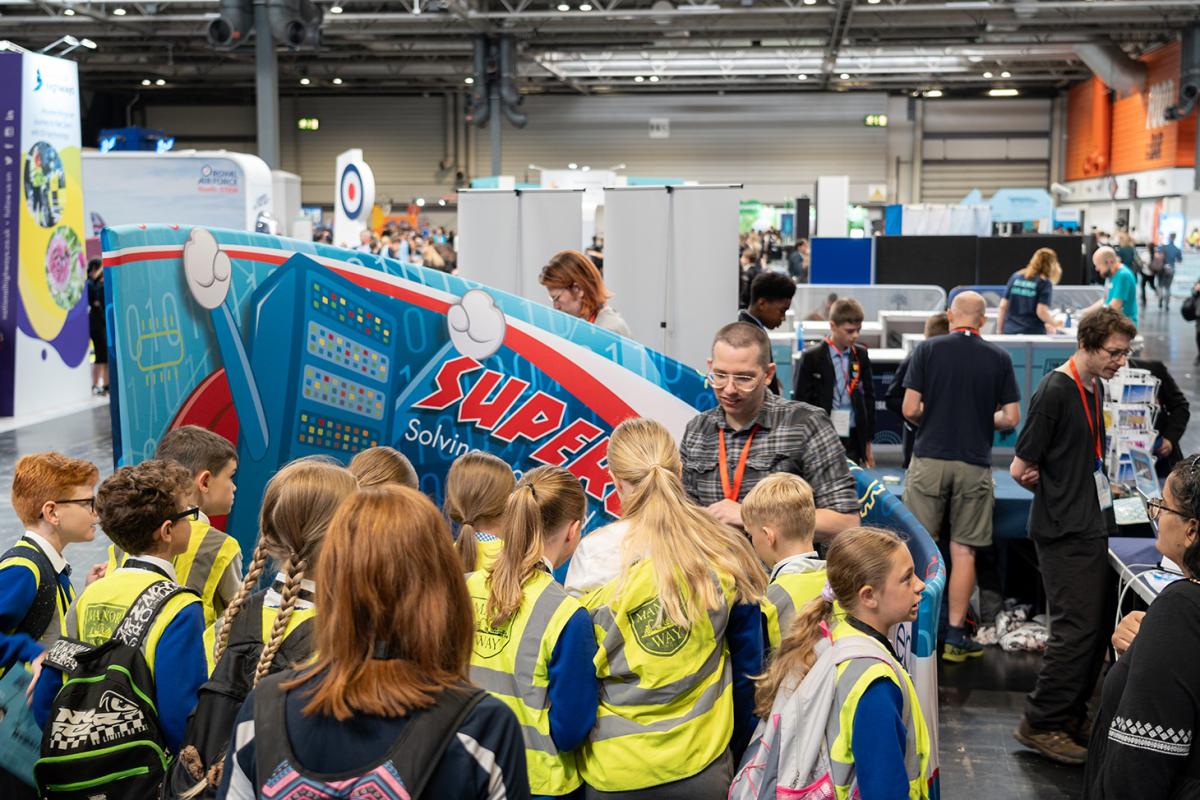
We were there to represent ARCHER2, the UK National Supercomputing Service, at what has been described as the UK’s “largest celebration of STEM (science, technology, engineering and maths) for young people and is one of the largest youth events in the UK” (Wikipedia, 2023).
At The Big Bang Fair 2023 (BBF23), we employed tried and trusted activities with good throughput to accommodate the large volume of young people, and used targeted messaging to tie the activities together in a high performance and scientific computing context. I describe our activities and other materials below.
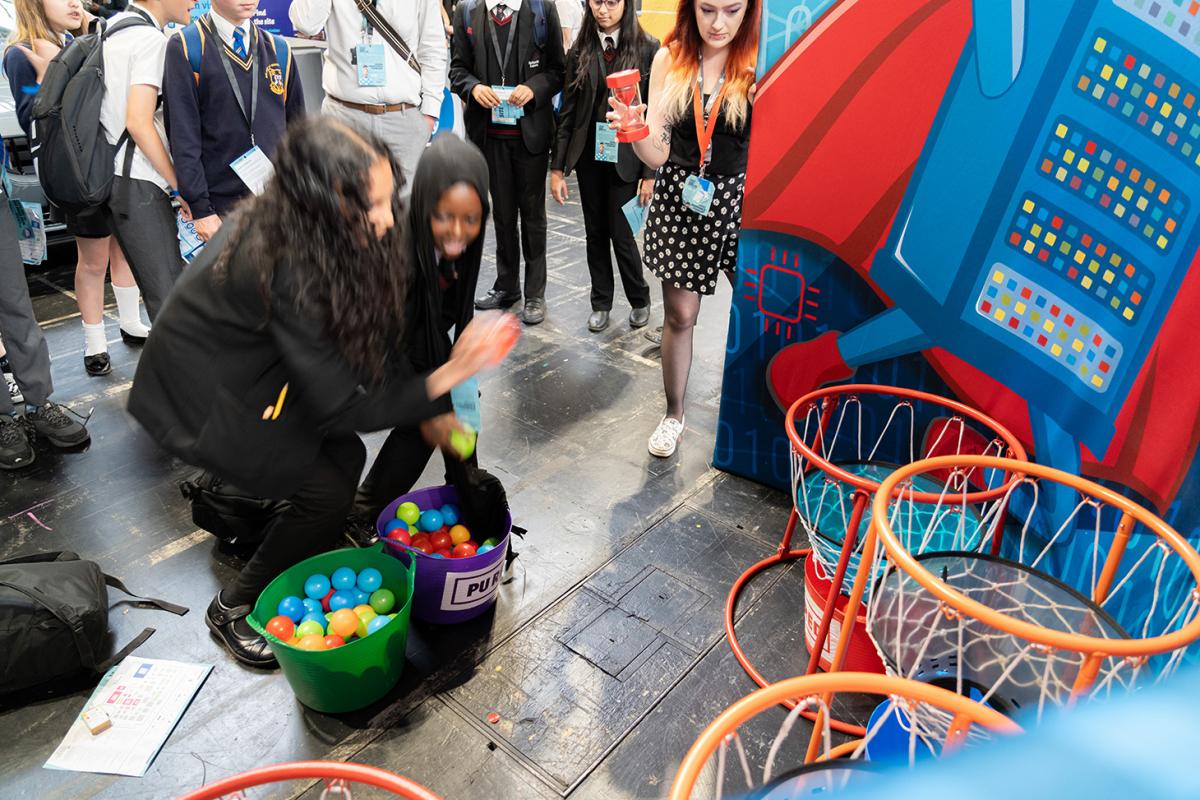
Ball-sorting
This ever-popular activity demonstrates parallelism through participants sorting different colours of ball by throwing them into buckets. We can then double, triple, quadruple and so on the number of participants and, over the course of a day, plot a graph to demonstrate the scalability.
As a ‘starter’ event, this helps draw in those who may be less interested in a computer-based activity, and once they have done the activity and put their sticker on the graph we can then talk to them in detail about parallelism and scalability as much more tangible concepts, eg “Why do you think it didn’t double when four people did it instead of two?”, “But more people were still able to achieve more in the same time, right?”. Having discussed these concepts, we can then direct people to our next activity.
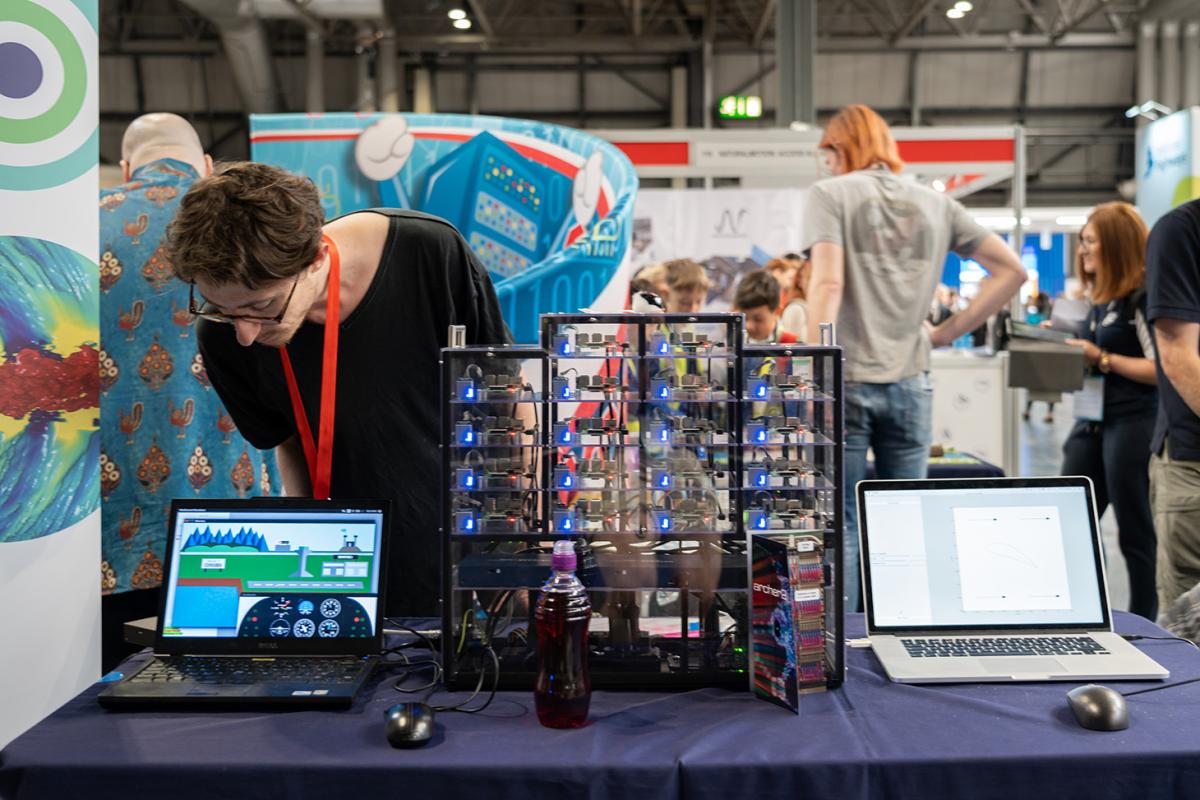
Wee Archie
Wee Archie is a small cluster of 18 Raspberry Pis and has been a successful part of EPCC and ARCHER outreach activities for several years. Wee Archie Blue was in full flow at BBF running our Aerofoil demonstration, having just returned from the ISC High Performance conference in Hamburg and also met the leader of the City of Edinburgh Council the previous week. However this may be Wee Archie's last Big Bang Fair as colleagues are already working on a new system.
Wee Archie's LED display not only works well to draw people to our stand, but it is a core part of the demonstration of parallelism and HPC. Participants use laptops to enter parameters into a simulation (in this case our Aerofoil demonstration, where they design their own aircraft wing) and submit the job to Wee Archie for it to run on the cluster.
Once the job is running on the cluster the first four columns of LEDs on each Raspberry Pi (each in effect acting as a node in this example) demonstrate computation activity on each of its four cores (helping to explain shared memory programming), while the fifth and sixth columns demonstrate communication in and out of each node/Pi (helping to explain distributed memory programming). The final columns demonstrate memory usage and temperature.
Simulations take only thirty seconds each to run on eight Raspberry Pis/nodes in the two-laptop set-up, which means the staff running the demonstration barely have time to finish explaining the process before the results are sent back to the laptops to be displayed as airflow or pressure charts. Animations then demonstrate to participants whether or not their plane would take off, and if so how far it would fly.
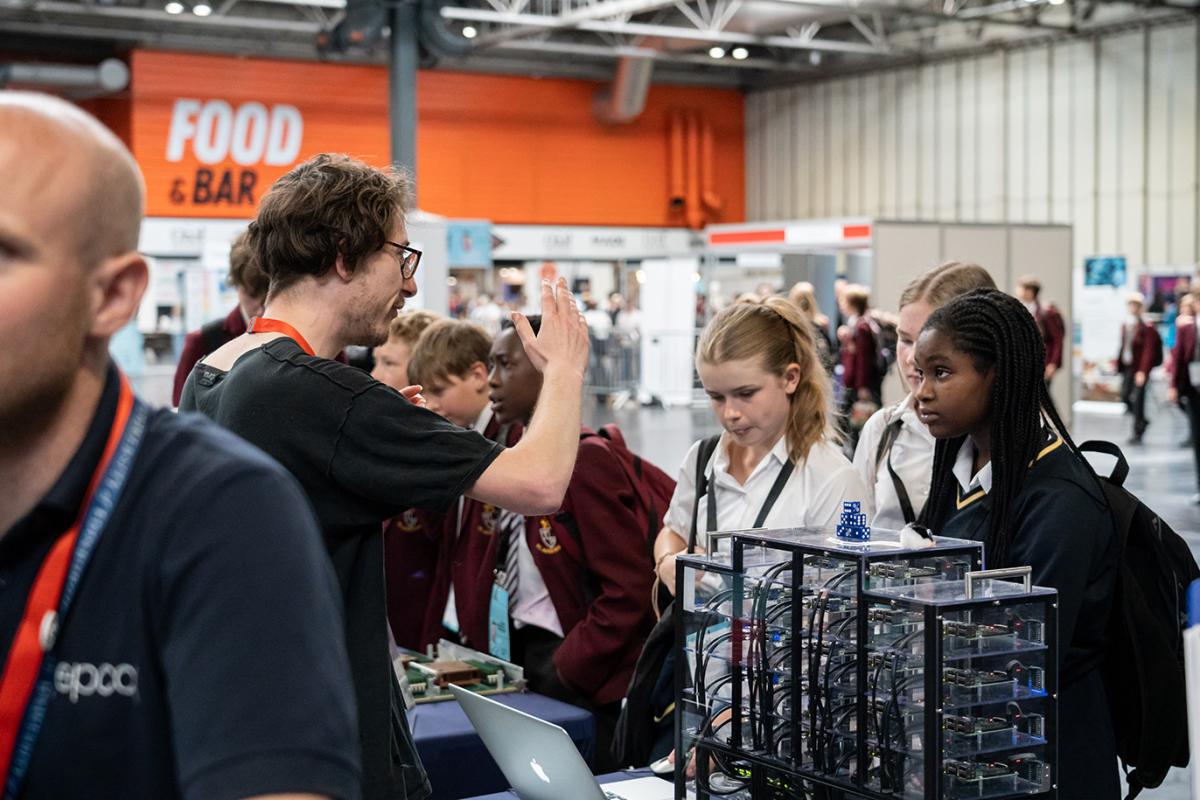
Hardware display
Alongside Wee Archie we can also display the ‘real thing’. This year we took part of a blade from ARCHER2 alongside a blade from a Cray XT4 (same type as HECToR, the last but one UK national supercomputing service) for comparison. These were displayed alongside life-size images of the front and back of an ARCHER2 cabinet to demonstrate the immense scale of the full-size machine. Having the hardware display situated on the most ‘public-facing’ side of the stand was a new approach for this year, and it worked really well in attracting visitors and directing them to the other activities.
Logic puzzles
We employed our logic puzzles to encourage participants to use their brainpower to solve classic problems such as "Chicken, Grain, Fox River Crossing/Farmer’s Dilemma", and "Crossing the Bridge". Not only do these problems introduce a much more cerebral element, but they’re also a great way to get participants to think about how one might go about programming such a complex problem and to consider the software side of HPC.
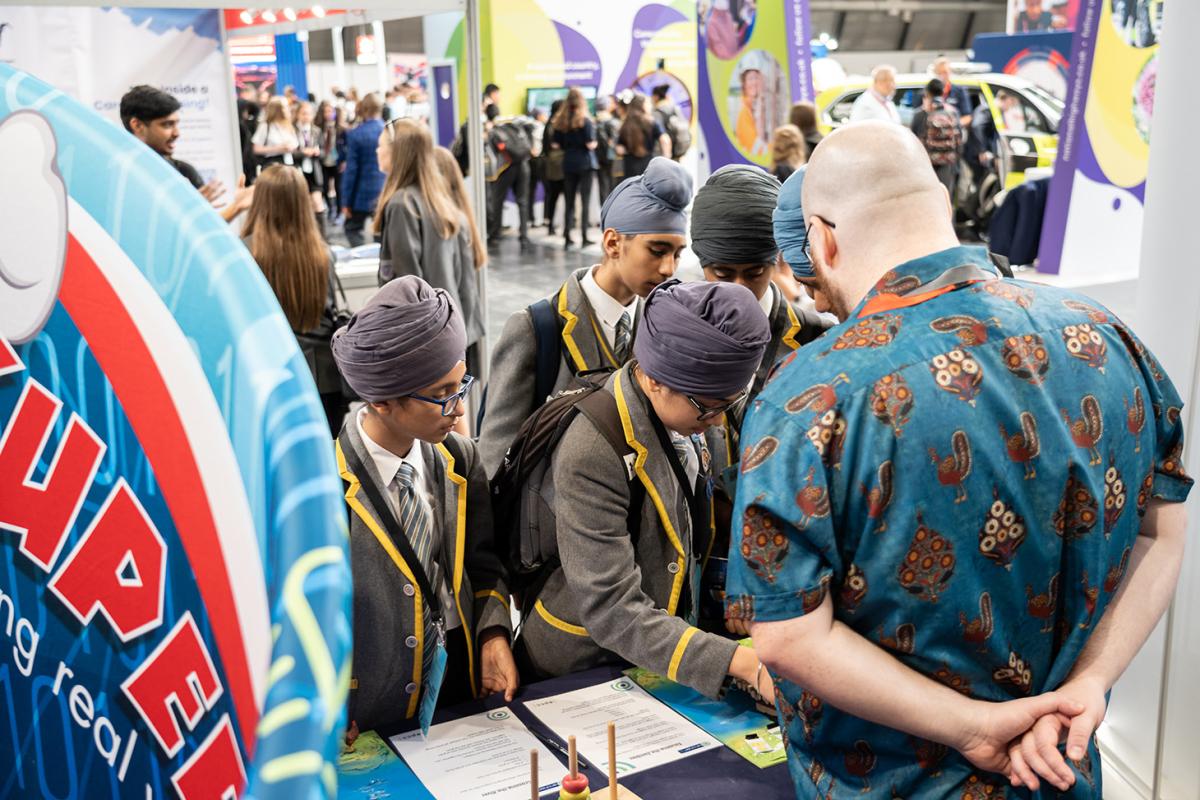
Personal reflection
Having participated in the Big Bang Fair in 2018, 2019, and 2022, what most impressed me this year was the deeper level of engagement we were able to achieve with attendees. In the past, at peak times, it has sometimes been difficult to truly convey the educational message behind our activities while struggling with throughput and queues backing up, whereas with BBF23’s new format, with school groups visiting for a half day only (morning or afternoon) everything seemed more steady which encouraged more considered and in-depth conversations. All in all it was a very successful and enjoyable experience for all involved!
The EPCC team at BBF comprised myself, Jemma Auns, Oliver Brown, Sam Haynes, Kara Moraw, Spyro Nita, Luca Parisi, James Richards, Darren White, and Chris Wood.
Organised by Engineering UK, The Big Bang UK Young Scientists & Engineers Fair was held the NEC, Birmingham, in June.
Links
Discover and Learn, our website for Outreach
Wikipedia, 2023. The Big Bang Fair. [Accessed 12 July 2023]
